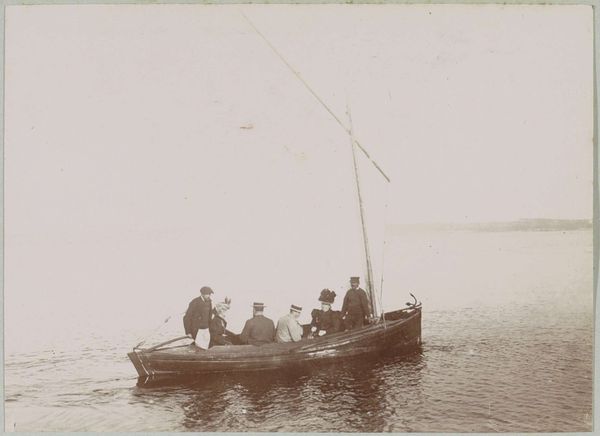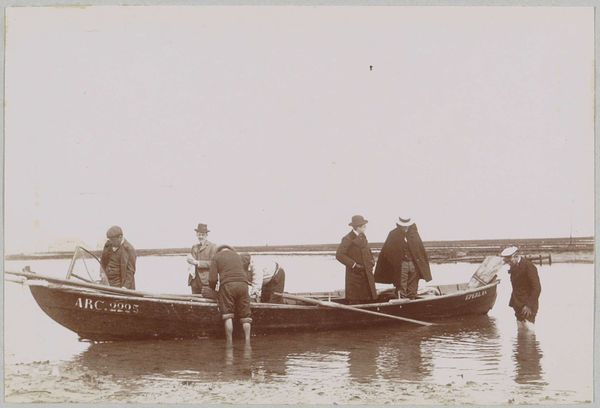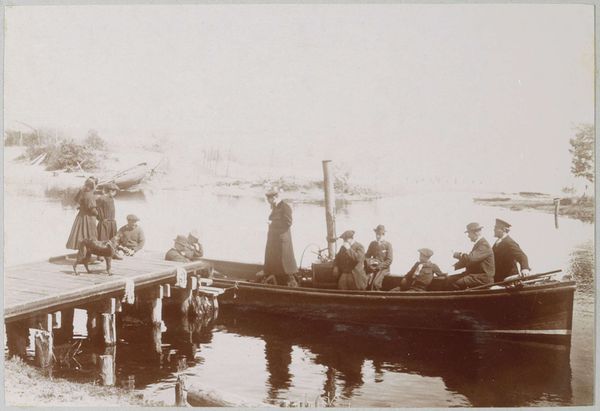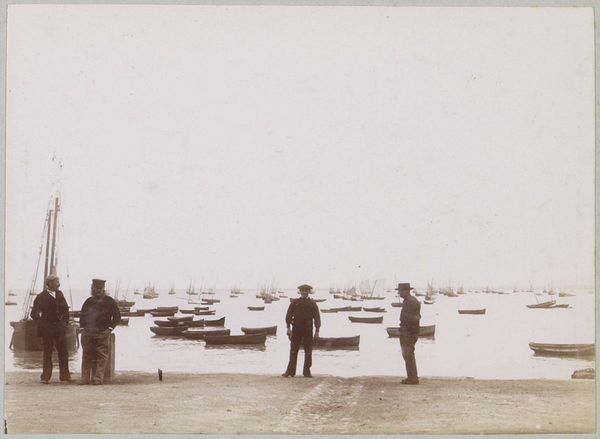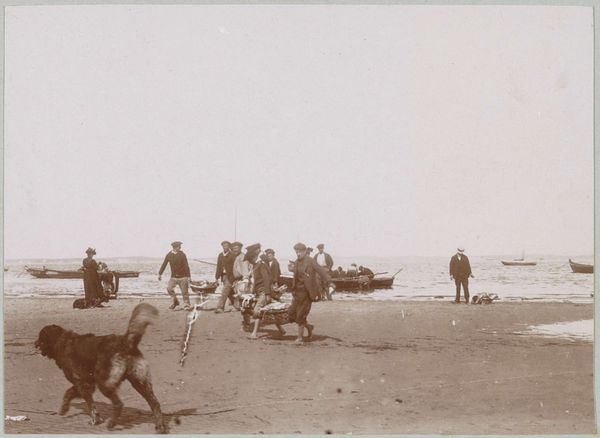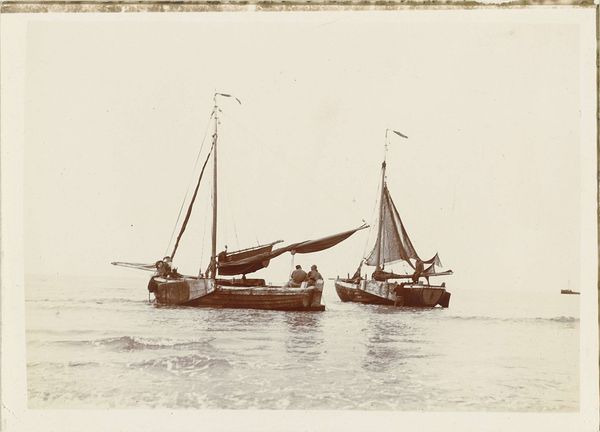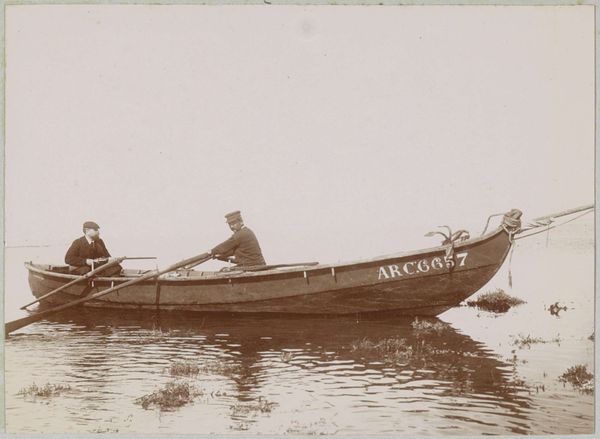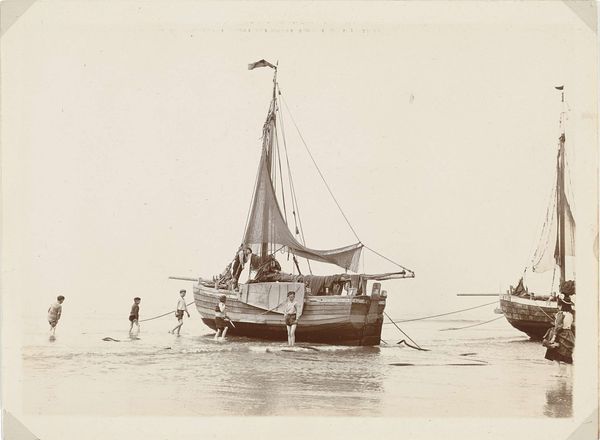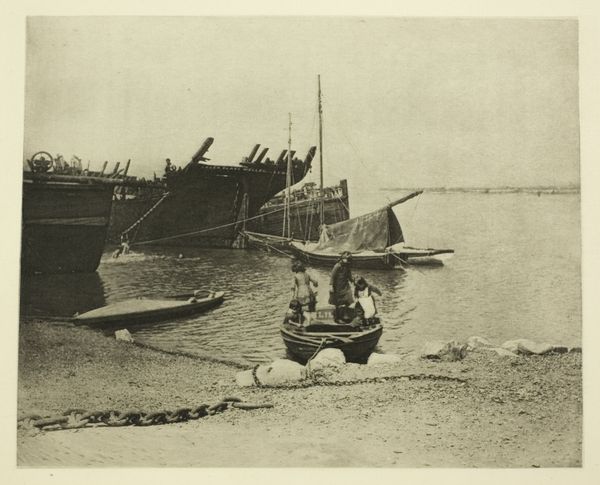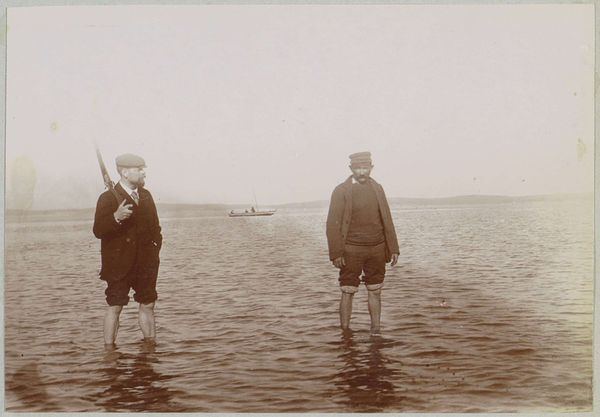
Dimensions: height 80 mm, width 109 mm
Copyright: Rijks Museum: Open Domain
Editor: We're looking at "Vissers brengen roeiboot aan land, vermoedelijk bij Arcachon," taken around 1897. It depicts fishermen bringing their boat to shore. There's a really striking documentary feel to it. How do you read it, especially considering the period? Curator: This photograph offers a compelling window into the socio-economic realities of late 19th-century coastal communities. It’s not just about fishermen; it's about their relationship to labor, to the sea, and to the market. How do you think this image may have circulated in its time? Editor: I imagine it might have been viewed as a record of everyday life, possibly even a romanticized one. It almost idealizes the toil. But considering the presence of impressionism and plein-air style... Curator: Exactly! The adoption of a recognizable ‘painterly’ aesthetic, combined with its social subject, could suggest a negotiation of artistic values occurring within the relatively young medium of photography. This aligns with photography's evolving role, seeking recognition alongside painting within established art institutions. How does this perspective influence your interpretation of the image now? Editor: It makes me think about who the intended audience might have been and how this kind of scene would have been presented or consumed in a gallery setting. Curator: Precisely! Consider also the potential for staged realities. The photo offers a selective truth, subtly shaping narratives about work and the environment for public consumption. Editor: So, beyond a simple depiction, it highlights photography's power in constructing social narratives. It feels like looking at how an artform defines itself while depicting defining themes. Thanks. Curator: My pleasure! Reflecting on these images, and their history, lets us examine art’s complicated social position.
Comments
No comments
Be the first to comment and join the conversation on the ultimate creative platform.
